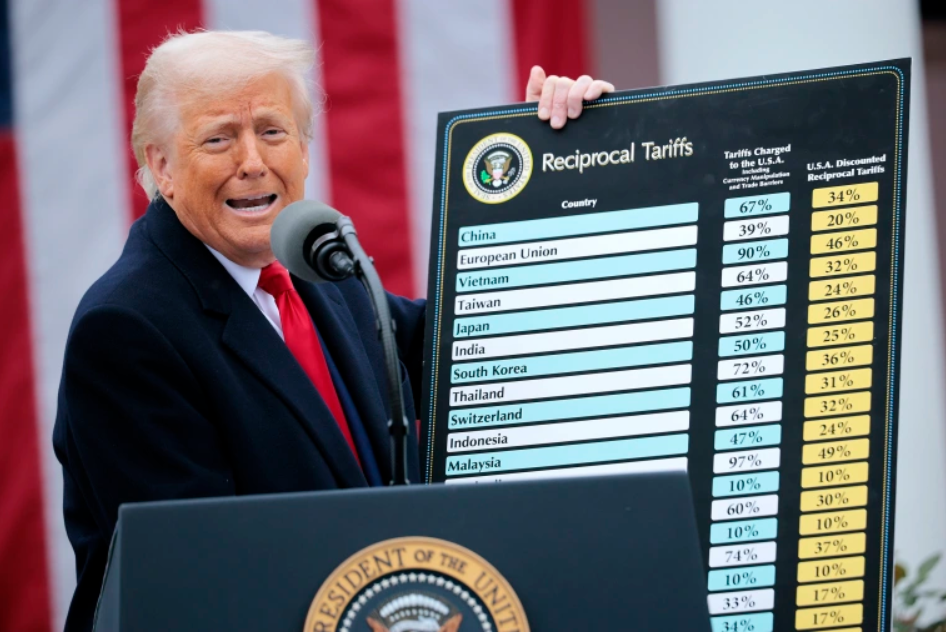
Hey there, fellow trade enthusiasts and economic watchers! If you’ve been keeping an eye on the headlines, you know that tariffs are back in the spotlight like never before. With President Donald Trump at the helm once again, his signature trade policies are making waves—and not just ripples. As of August 12, 2025, the big news is the fresh 90-day extension on heightened tariffs with China, averting what could have been a market-shaking escalation. But that’s just the tip of the iceberg. In this blog, we’ll dive into the drama, the details, and the dollars behind Trump’s recent tariff moves. Buckle up; it’s going to be an insightful ride!
A Quick Refresher: Trump’s Tariff Legacy
Donald Trump’s affinity for tariffs isn’t new—it’s practically his economic calling card. During his first term, he slapped tariffs on everything from steel and aluminum to washing machines, aiming to protect American jobs and reduce trade deficits. Fast forward to 2025, and Trump 2.0 is ramping things up. Since April, he’s implemented a 10% universal tariff on all U.S. imports, with even steeper rates for key trading partners. The goal? To bring manufacturing back home and counter what he calls “unfair” trade practices.
These aren’t just numbers on paper; they’re reshaping global supply chains. For instance, tariffs on Chinese goods have hovered at sky-high levels, peaking at up to 145% before truces kicked in. But why the fuss now? Let’s zoom in on the freshest developments.
The Headline Grabber: 90-Day China Tariff Truce Extension
Just hours before a critical August 12 deadline, President Trump signed an executive order extending the suspension of heightened tariffs on China for another 90 days. This move, announced on August 11, prevents U.S. tariffs on Chinese imports from spiking further, giving negotiators more time to hash out a deal.
Why the extension? Talks between U.S. Treasury Secretary Scott Bessent and Chinese officials in Geneva and Sweden have shown progress, but not enough for a full resolution. Trump himself has been vocal about not wanting to “reignite the fierce trade conflict” that rattled markets earlier this year. This truce isn’t Trump’s first rodeo—he’s extended similar deadlines before, signaling a pragmatic side to his tough-talking style.
But don’t mistake this for softness. As one X post quipped, “Trump can bully countries around the world all he wants, but there is one country he can not bully and that is China.” The U.S. economy’s deep ties with China mean a full-blown war could spell disaster—think collapsed supply chains and skyrocketing prices.
Beyond China: Universal and Country-Specific Tariffs in Play
Trump’s tariffs aren’t laser-focused on one nation; they’re a broadside. Here’s a snapshot of the current landscape:
| Country/Region | Tariff Rate | Key Impacts |
|---|---|---|
| All Imports (Universal) | 10-30% | Raised effective U.S. tariff rate to over 17%, the highest since the Great Depression. Driving up consumer prices and inflation. |
| China | Up to 145% (suspended) | Truce extensions keep things stable, but uncertainty looms. U.S. prices for electronics and apparel remain elevated. |
| India | 50% | Aimed at hurting Russia’s oil sales (India is a major buyer). Trump calls it a “big blow” to Moscow. India decries it as “unfair and hypocritical.” |
| Mexico & Others | 10-30%+ | Hitting farmers hard; California growers are voicing frustration at town halls. |
These tariffs have also spared some surprises—like exempting bullion imports, which led to a dip in gold and silver prices. Meanwhile, the Department of Justice is defending the tariffs’ legality in court, arguing that reversing them now would be too disruptive.
The Economic Ripple Effects: Wins, Losses, and Wallet Hits
Tariffs sound great in theory—protect jobs, boost domestic production—but the reality is messier. On the plus side, Goldman Sachs reports “sharp declines” in import prices as foreign exporters absorb some costs, potentially benefiting U.S. consumers in the long run.
The downsides? Inflation is stubbornly high, with July’s consumer prices rising due to these import taxes. Farmers, especially in states like California, are feeling the pinch from retaliatory tariffs abroad. And let’s not forget the markets: Stocks wobbled earlier this year, though the latest extension brought some relief.
Critics, including economists and even some Republicans, argue these policies are “indefensible” and could spark a global slowdown. Proponents? They see it as tough love for fairer trade.
Global Backlash and Geopolitical Angles
The world isn’t sitting idle. India’s hit back hard, viewing the 50% tariff as a direct attack tied to its Russian oil purchases. Pakistan got a win with the U.S. designating the Balochistan Liberation Army as a terrorist group—perhaps a tariff-related favor?
On X, the chatter is fiery: From nominations like EJ Antoni (Trump’s pick for BLS commissioner, who’s bullish on tariffs) to sarcastic takes on U.S. hypocrisy. It’s a reminder that tariffs aren’t just economic—they’re political theater on a global stage.
Pros and Cons: Is This Tariff Strategy Paying Off?
Pros:
- Protects U.S. industries and jobs.
- Pressures adversaries like China and Russia.
- Could lead to better trade deals long-term.
Cons:
- Fuels inflation and higher consumer costs.
- Hurts exporters (e.g., U.S. farmers facing retaliation).
- Risks escalating into full trade wars.
Wrapping It Up: What’s Next in the Tariff Saga?
As we hit mid-August 2025, Trump’s tariff extensions buy time, but the clock is ticking toward November’s potential deadline. Will we see a breakthrough with China, or more escalations? One thing’s clear: These policies are reshaping the global economy, for better or worse.
What do you think—smart strategy or risky gamble? Drop your thoughts in the comments below, and stay tuned for updates. If trade wars were a dance, Trump’s leading the tango—full of twists, dips, and drama!
Thanks for reading! Share this post if you found it helpful, and follow for more deep dives into current events.

This is a solid breakdown of design thinking